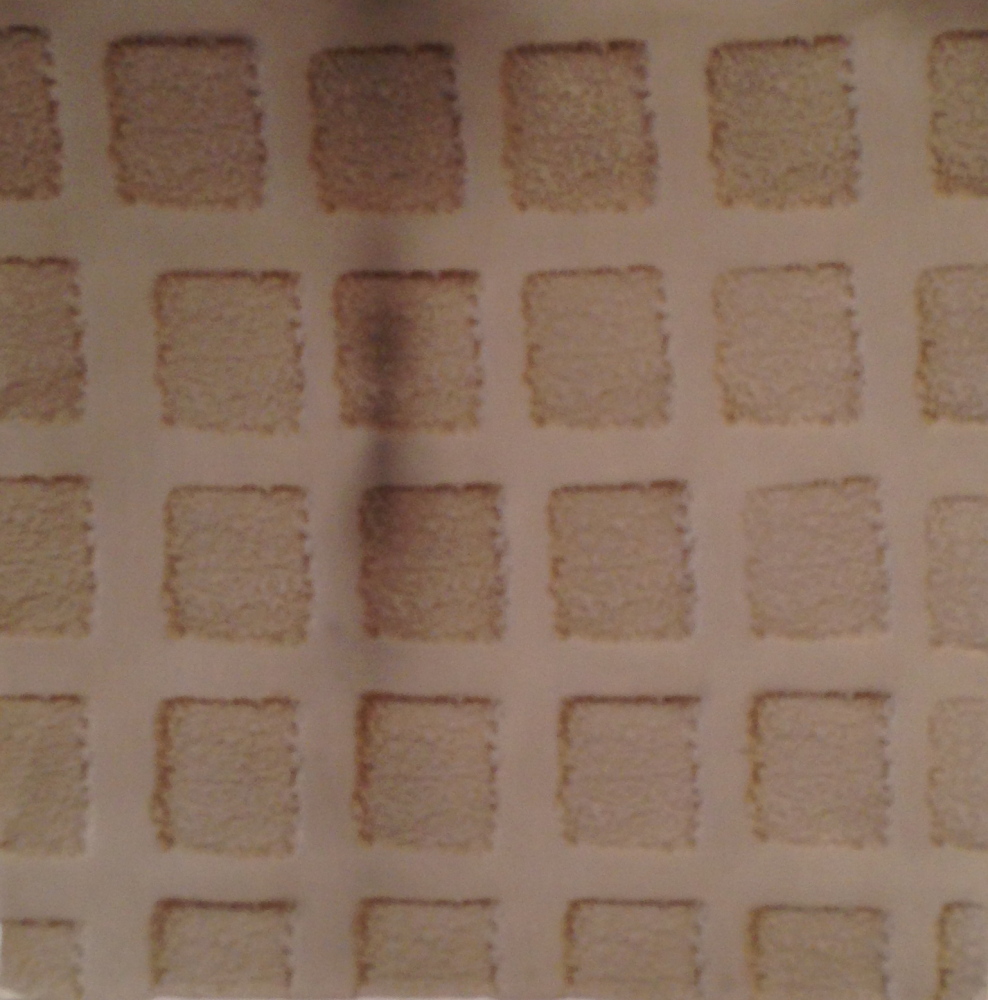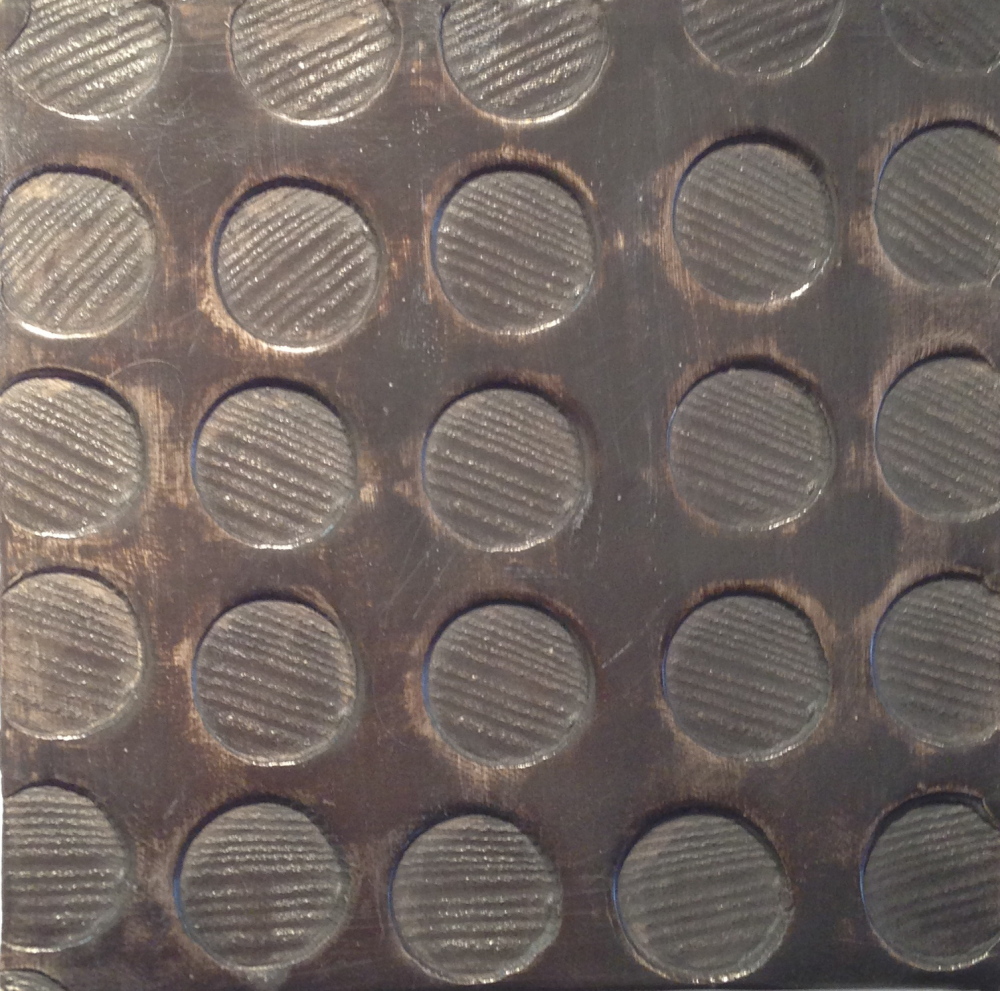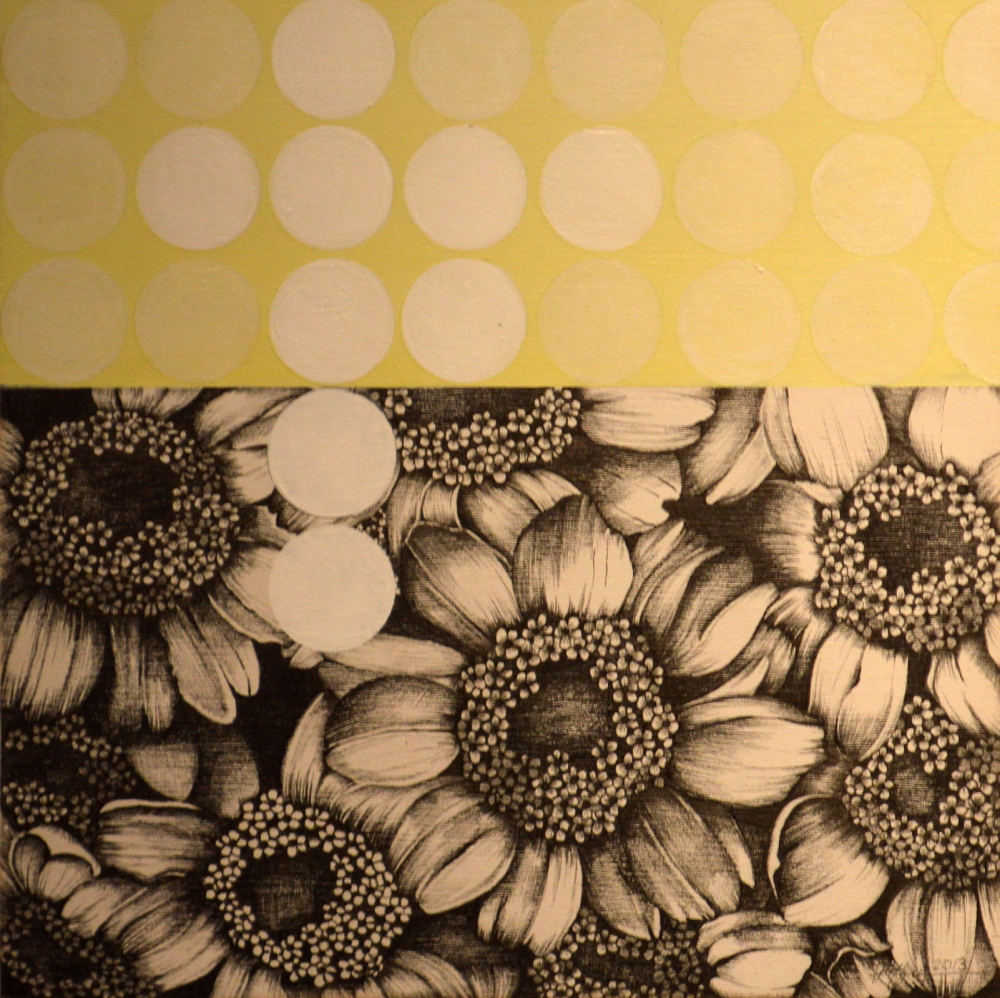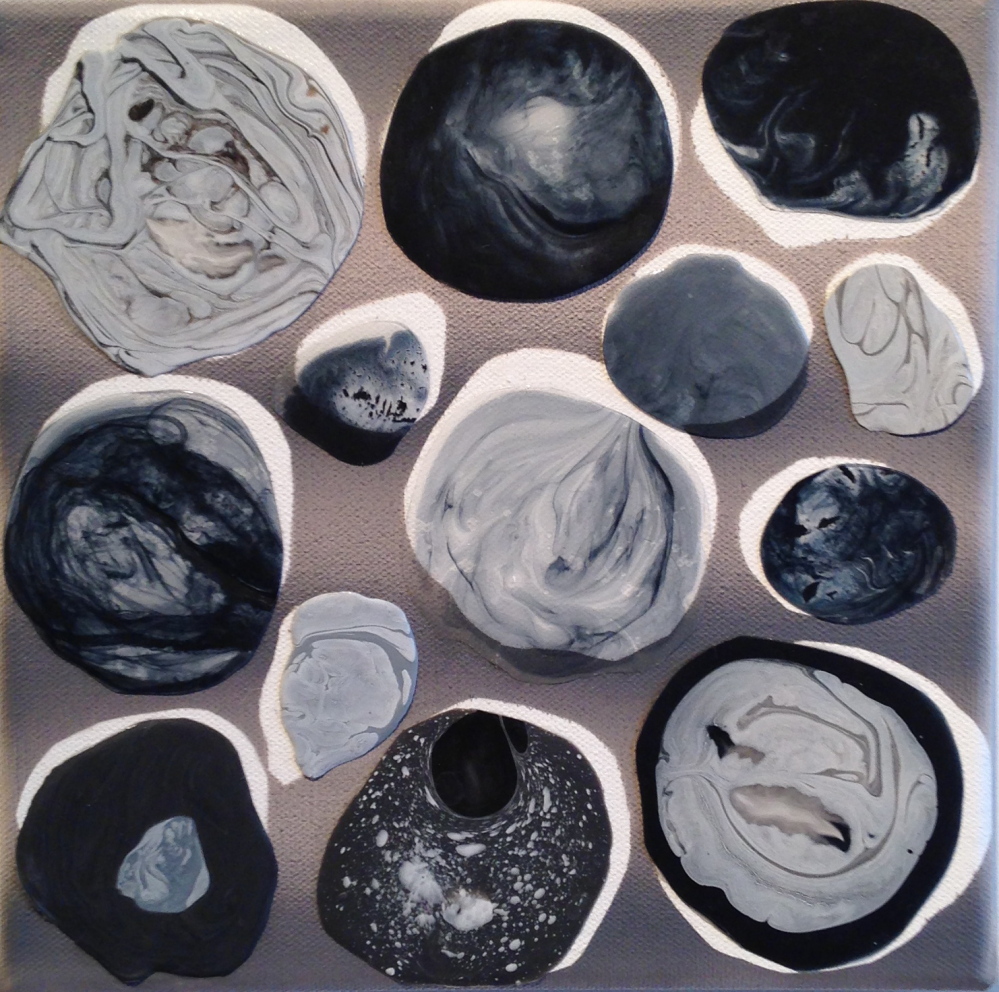The title “Eight Women Abstract Artists: 8 x 8” gives the impression of a curated show with an eye to gender identity. But the show actually evolved organically when Susan Maasch simply set out to plan a holiday show that would include a wide cross-section of her gallery artists.
Not surprisingly, the small abstract works by the eight featured artists are almost all paintings. The exception is the ceramic work of Paula Shalan. Instead of exuding a one-of-these-things-is-not-like-the-others feel, however, Shalan’s work sets the stage for the entire body of abstract works.
Shalan’s pieces are tiles that play the part of paintings – especially in the context of this show because the paintings are all on unframed 8-by-8-inch panels. Shalan’s matte and monochromatic aesthetic is geared toward basic but loose forms: stripes, circular dots, grids and so on. In short, it’s the fundamental vocabulary of abstraction. Moreover, since the common truth about ceramics is the idea of the coherently constructed object, Shalan’s work plays to the idea of small painting as intimate object – which is now and has always been the expert turf of ceramics.
If you enter the show without preconceptions, you are very likely never to notice Shalan’s works are clay instead of oil or acrylic on panel. And that is hardly a mistake: The works are hung as paintings, next to paintings, and are clearly and actively engaged in a visual conversation about painting – not clay.
If Maasch had hung Shalan’s works on the wall next to the “Cupinvitational” (a tiny but exciting show of clay cups; particularly notable are Andrew Avakian’s stunningly elegant square-based vessels and Chris Dufala’s brilliant old-newspaper transfer cylinders), then Shalan’s works might announce themselves to the viewer as ceramic – but even then, only maybe.
Most ceramics, after all, are paintings. They just happen to be paintings on clay and the paint just happens to be glaze. One of my favorite Maine painters, after all, isn’t even a painter: Jonathan Mess is a clay sculptor whose tiles/slabs stand up to the best abstract painting in Maine.
And some of the best abstract painting around is on display in “8 x 8.” Kiki Gaffney’s panels, for example, engage the world of abstract painting alternately through natural or geometrical mathematics. One of her panels features a low-contrast grid of circles above a series of flowers made – at closer inspection – of more little flowers. This is a dialectical pairing of Euclidian versus fractal mathematics – the latter being the way of nature based in common sense rather than digital arithmetic. By making the comparison, Gaffney opens the door to cultural inquiry, yet this is softened by what any casual viewer might see as a simple comparison of approaches to textile design. (The fractal logic also engages the pinhole photographs of DM Whitman displayed across the gallery in which forest floor flora surrounding a recumbent nude gather a rhythmically psychedelic presence.)
Jessica Gandolf’s work is also perfectly geared to this intimate scale. The difference between her pair of side-by-side panels is revealing: The chaotic, all-over work dovetails elegantly with the intimate-object notion guiding this show (versus the figure/ground logic of the other piece), so its relative strength reveals a great deal about her work and its relation to finish, color and rhythm.
Joanne Mattera’s monochromes exude luscious indulgence but are tempered by a savvy sense of portion size. As well, with her small panels on a long wall of panels, Mattera’s eye to the material painterly edge and its role in scale come across with surprising clarity.
Penelope Jones’s geometrically pattern-oriented works also shade the impressive sophistication behind their graciously approachable presentation: Escher-like shapes flow between contrasts of value, clarity and color; they push and pull between positive and negative space or between a sense of gestalt and component elements.
Amy Goodwin’s material indulgence is also successful on a small scale (her large and colorfully dollopy candy-button-on-paper-tape piece in Maasch’s reopening exhibition was the showstopper), particularly the black and white drop-oriented piece. Her highly colored small panel is so reliant on surface that it is decidedly stronger up close.
The group is rounded out by Rose Olsen, whose elegantly beautiful works push abstraction to the liminal edge of the finely finished object – like if Barnett Newman or Ad Reinhardt had been craft artists. This is where “8 x 8” transcends a standard gallery show and comes across as an intuited observation on Maasch’s part. Her roster, after all, is well balanced between men and women, but her painters are largely women abstractionists. Is that chance or is there something going on with abstract painting by women?
While I don’t think the point of “8 x 8” was to say “the strongest women abstract painters in Maine are making more and more intimate work that engages the logic and finish of craft,” that is both a valid conclusion about the show and an insightful observation about ambitious art in Maine.
“8 x 8” is an engaging, handsome and interesting exhibition. And I like the questions it raises.
Freelance writer Daniel Kany is an art historian who lives in Cumberland. He can be contacted at:dankany@gmail.com
Copy the Story LinkSend questions/comments to the editors.






Success. Please wait for the page to reload. If the page does not reload within 5 seconds, please refresh the page.
Enter your email and password to access comments.
Hi, to comment on stories you must . This profile is in addition to your subscription and website login.
Already have a commenting profile? .
Invalid username/password.
Please check your email to confirm and complete your registration.
Only subscribers are eligible to post comments. Please subscribe or login first for digital access. Here’s why.
Use the form below to reset your password. When you've submitted your account email, we will send an email with a reset code.